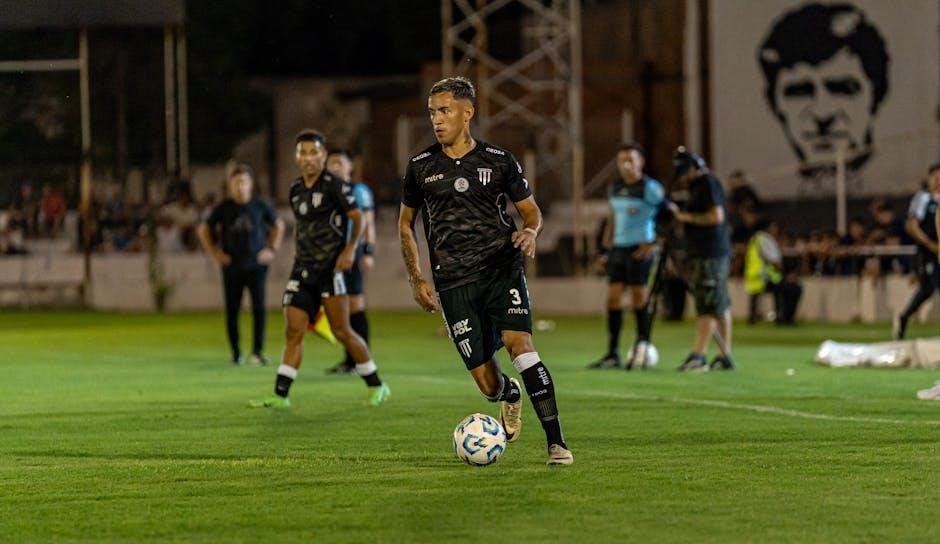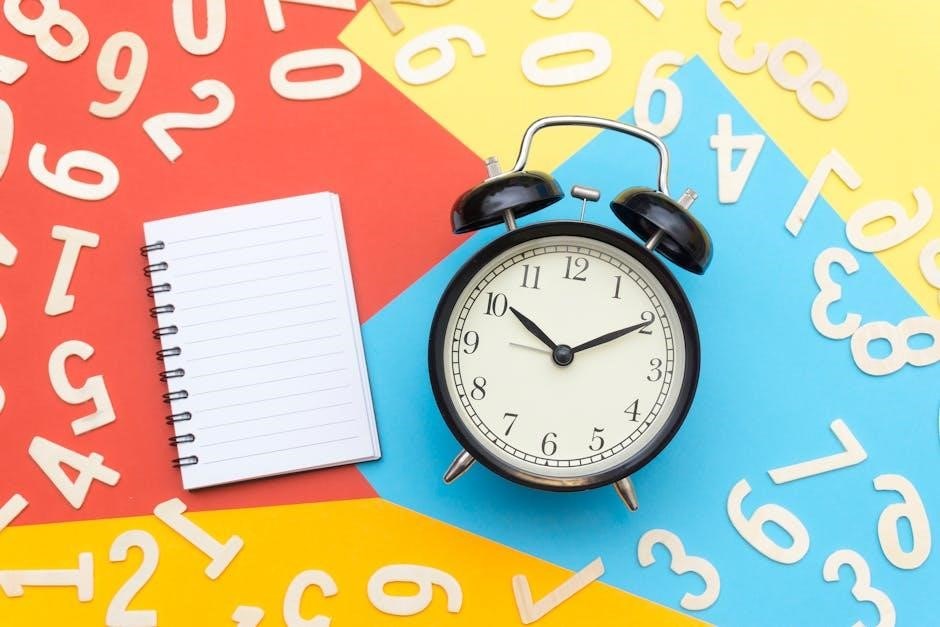
little league shoulder rehab protocol pdf
Little league shoulder is a condition affecting young athletes, typically caused by repetitive throwing motions, leading to growth plate irritation in the humerus, requiring a proper rehab protocol․
Definition and Causes
Little league shoulder is defined as a condition that arises from microscopic injuries to the growth plate in the shoulder, typically occurring in young athletes who participate in overhead throwing sports․ The repeated stress and strain on the growth plate, located in the humerus, can lead to irritation and inflammation, resulting in pain and discomfort․ This condition is often characterized by a gradual onset of symptoms, including pain in the upper part of the arm bone during throwing and overhead activities․ The causes of little league shoulder can be attributed to various factors, including poor throwing mechanics, inadequate warm-up and cool-down routines, and insufficient rest and recovery time․ Additionally, anatomical abnormalities, such as uneven growth plates, can also contribute to the development of this condition․ Understanding the definition and causes of little league shoulder is essential for developing effective prevention and treatment strategies․

Characteristics of Little League Shoulder
Characterized by throwing-related pain and decreased throwing velocity, often affecting adolescent male athletes with frequent overhead throwing activities and poor mechanics, requiring a proper rehab protocol and treatment plan implementation․
Symptoms and Presentation
Symptoms of little league shoulder include a gradual onset of pain in the upper part of the arm bone during throwing and overhead activities․ Athletes may notice a decrease in velocity and control of throwing or arm swing․ The pain is usually located in the proximal humerus and can be exacerbated by throwing, especially with maximum effort․ Some athletes may also experience a decrease in range of motion or stiffness in the shoulder․ The symptoms can be persistent and may interfere with athletic performance, requiring a thorough evaluation and proper treatment․ A comprehensive rehab protocol should be implemented to address the underlying causes of the condition and promote a safe return to sports․ The presentation of little league shoulder can vary, but it is essential to recognize the symptoms early to prevent further injury and ensure a successful recovery․

Research and Clinical Trials
Clinical trials investigate optimal rest duration and graduated return to sports protocols for little league shoulder, utilizing collaboration between biomedical engineers and physicians to perform research studies and analyses․
Investigations and Protocols
Investigations into little league shoulder involve assessing the athlete’s throwing mechanics and identifying potential flaws that may be contributing to the condition․ Protocols for diagnosis typically include a physical examination and medical history, as well as imaging studies such as X-rays or MRI scans to rule out other potential causes of pain․ Researchers have also developed protocols for graduated return to sports, which involve a gradual progression of throwing activities to allow the athlete to rebuild strength and endurance․ These protocols are often tailored to the individual athlete’s needs and may involve a combination of rest, rehabilitation exercises, and gradual return to throwing activities․ The goal of these protocols is to allow the athlete to safely return to their sport while minimizing the risk of further injury or complications․ By following a structured protocol, athletes can reduce their risk of re-injury and achieve a successful return to play․

Expert Insights and Guidelines
Experts provide guidelines for diagnosis, treatment, and prevention of little league shoulder through educational materials and research studies on pediatric care and sports medicine protocols and recommendations․
American Academy of Pediatrics
The American Academy of Pediatrics is dedicated to improving the health and well-being of children, providing comprehensive resources and evidence-based guidelines for pediatric care, including sports medicine and injury prevention․
The organization offers expert insights and recommendations for the diagnosis, treatment, and management of various conditions, including little league shoulder․
Through its website and publications, the American Academy of Pediatrics makes available a wide range of educational materials and research studies on topics related to child health, including sports-related injuries and rehabilitation protocols․
These resources are designed to help healthcare professionals, parents, and coaches understand and address the unique needs of young athletes, promoting healthy development and safe participation in sports․
The American Academy of Pediatrics plays a critical role in shaping the standards of care for children’s health, including the prevention and treatment of little league shoulder and other sports-related injuries․
Rehabilitation and Exercises
Rehabilitation involves gradual return to throwing with exercises like scaption and external rotation to strengthen shoulder muscles and improve flexibility and range of motion slowly and safely over time always;
Scapular Dyskinesis and Scaption
Scapular dyskinesis refers to the alteration of the scapula’s static position or kinematics during movements in the shoulder joint, which can contribute to little league shoulder․ Exercises like scaption, which involves raising the arm to shoulder level at a 30-degree angle, can help improve scapular stability and strength․
Scaption exercises can be performed with the elbow straight and thumb up, and can be modified to suit the individual’s needs and abilities․ External rotation exercises can also be performed to target the rotator cuff muscles and improve overall shoulder function․
By incorporating scaption and external rotation exercises into a rehabilitation protocol, individuals with little league shoulder can improve their shoulder strength, flexibility, and range of motion, reducing the risk of further injury and improving overall athletic performance․ Regular practice and gradual progression of exercises are essential for optimal results․

Online Resources and Repositories
MOspace Institutional Repository offers freely available resources, including little league shoulder rehab protocol pdf, for research and educational purposes, online․
MOspace Institutional Repository
The MOspace Institutional Repository is an online platform that provides access to a wide range of resources, including research papers, articles, and documents related to little league shoulder rehab protocol pdf․ This repository is maintained by the University of Missouri and offers a comprehensive collection of scholarly works, creative outputs, and other resources created by faculty, students, and staff․ The repository is designed to make these resources freely available to the public, promoting knowledge sharing and collaboration․ By utilizing the MOspace Institutional Repository, researchers and healthcare professionals can access valuable information on little league shoulder rehab protocol pdf, including studies, treatment guidelines, and rehabilitation protocols․ This online platform serves as a valuable resource for those seeking to learn more about little league shoulder and its rehabilitation, with a focus on providing evidence-based information to support best practices in treatment and care․ Various resources are available for download․
Related Posts

carrier comfortlink alarm codes pdf
Download the comprehensive Carrier ComfortLink alarm codes PDF guide for easy troubleshooting and system maintenance. Get instant access now!
squallywood pdf
Download Squallywood PDF instantly. Get your free copy now!

gottman worksheets for couples pdf
Strengthen your relationship with free Gottman worksheets for couples. Download printable PDFs based on research-backed strategies to improve communication and connection.